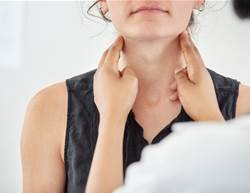Tongue bumps happen. Most are harmless, but a few can be painful, swollen or oddly coloured and may need checking.
“The tongue is a complex muscular organ made up of specialised soft tissues,” explains dentist Dr Sandip Sachar. “These include mucosal layers, salivary glands, connective tissue and an extensive network of blood vessels and nerves.” Because the tongue is constantly exposed to cutlery, dental tools, foods, bacteria and other irritants, it is prone to short-lived changes in appearance or texture.
Below, what those changes can mean and when to book a check-up.
Tongue bumps causes
According to Dr Sachar and dentist Dr Whitney White, bumps on the tongue usually fall into two groups—normal changes and those that need a closer look.
Normal tongue bump causes
- Prominent taste buds: Some people naturally have larger bumps toward the back of the tongue. These are normal.
- Geographic tongue (benign migratory glossitis): Smooth red patches with white borders that shift in shape and position. They can look like bumps or lesions but are harmless.
More serious tongue bump causes
- Transient lingual papillitis (“lie bumps”): Inflamed taste buds often triggered by irritation, stress or acidic foods and drinks. They appear as red clusters of bumps that studies show are common, but can be painful and under-diagnosed. They often affect the sides and/or tip of the tongue.
- Trauma and irritation fibromas: From accidental biting or friction against sharp teeth or dental appliances.
- Canker sores: Can be linked to stress or immune factors.
- Allergic reactions or sensitivities: Foods or dental products may cause swelling or redness that looks bumpy.
- Viral infections: Human papillomavirus (HPV), herpes simplex virus (HSV) or COVID-19 can cause tongue changes. HPV in the mouth may appear as small warty lesions and usually settles on its own. HSV can cause painful blisters sometimes with fever, drooling, trouble swallowing and swollen gums and is treated with antiviral medication. “COVID tongue” is often used to describe white patches, inflammation, ulcers and swelling, though more research is needed.
- Fungal infections: More common in people who are immunocompromised or wear dentures.
- Oral cancer or precancerous change: Lumps, bumps or ulcers that do not heal, persist for weeks or change in size or colour.
How to prevent and treat tongue bumps
Some tongue bumps can be headed off by avoiding trauma (be mindful with cutlery and dental tools), managing stress, skipping highly acidic or very spicy foods and practising good oral hygiene. Mild bumps often settle on their own.
For comfort at home, try a warm salt-water rinse or a short course of an over-the-counter topical oral anaesthetic gel to ease irritation while things heal. If your bumps seem food-related, track symptoms against what you eat and avoid triggers. If you use tobacco, quitting lowers the risk of ongoing inflammation or more serious changes.
Eating soft foods and staying well hydrated also supports recovery. Most bumps improve within a few days and don’t need medicine, except for infections like oral thrush, which may require a prescription from your GP.
When to see a doctor
Seek care if bumps are painful, keep returning or have not improved after two weeks. Other red flags include unexplained bleeding, swollen lymph nodes, trouble swallowing or breathing or risk factors for oral cancer such as heavy alcohol or tobacco use or a strong family history.
Changes on the tongue are easy to ignore because they may be painless. Regular dental check-ups are for the whole mouth, tongue included and can provide peace of mind while helping to catch anything suspicious early.










